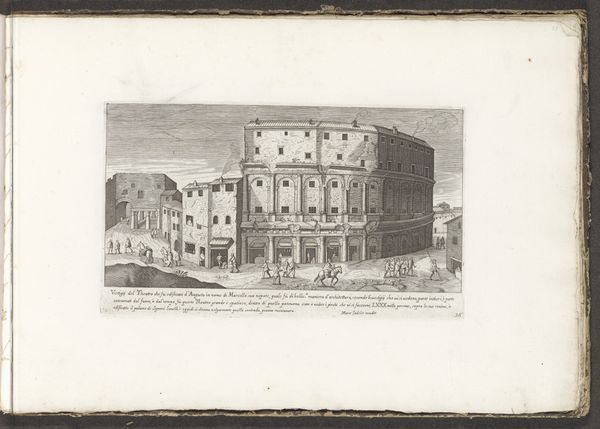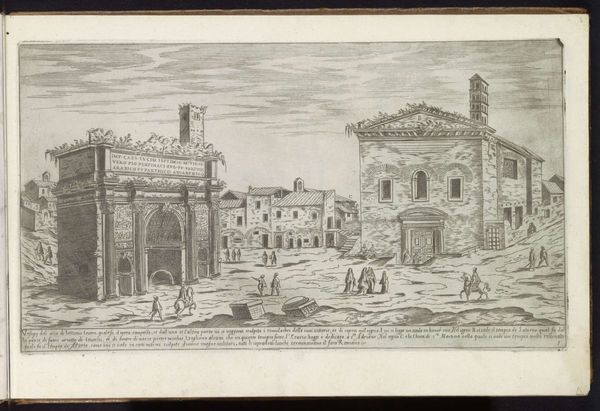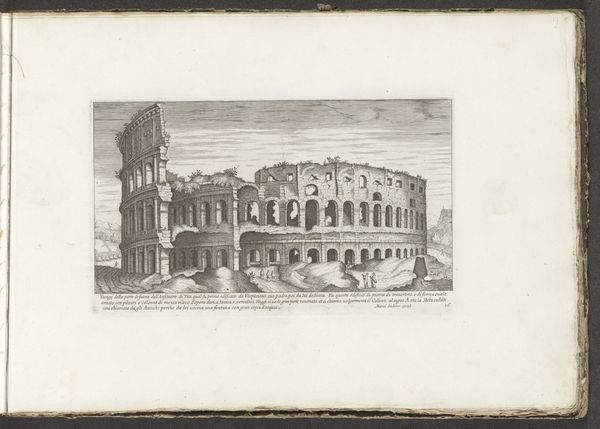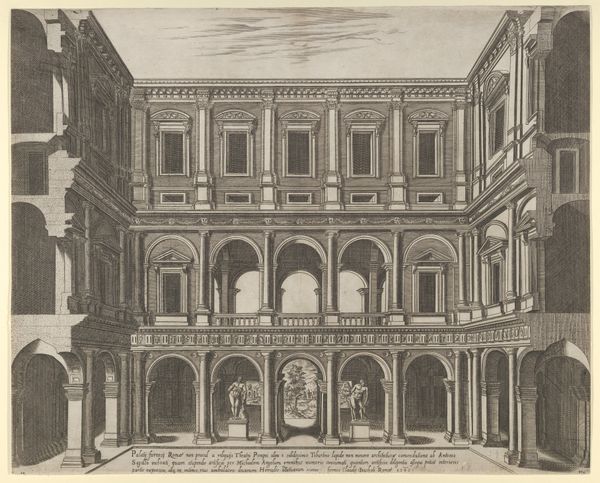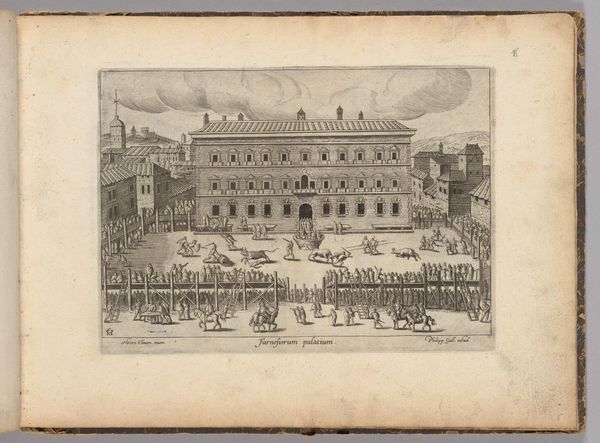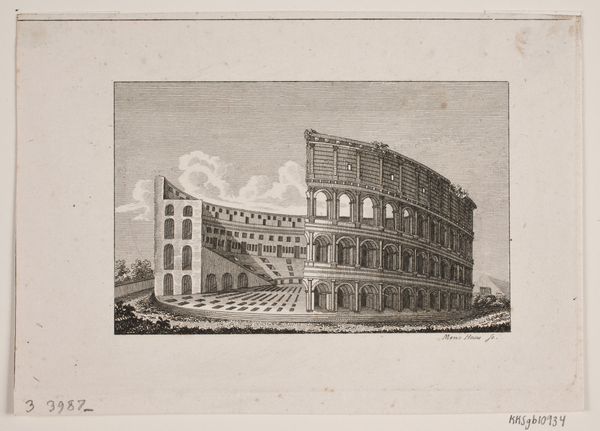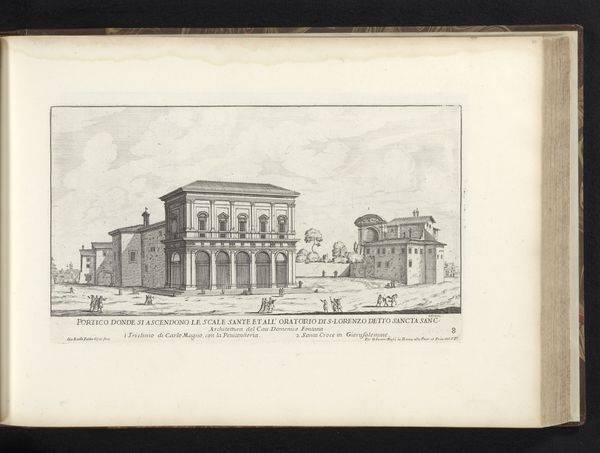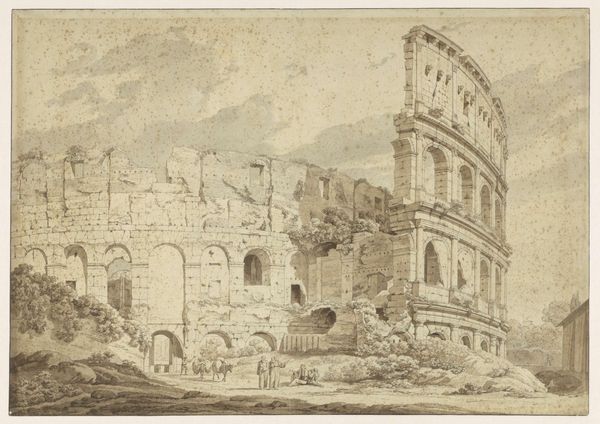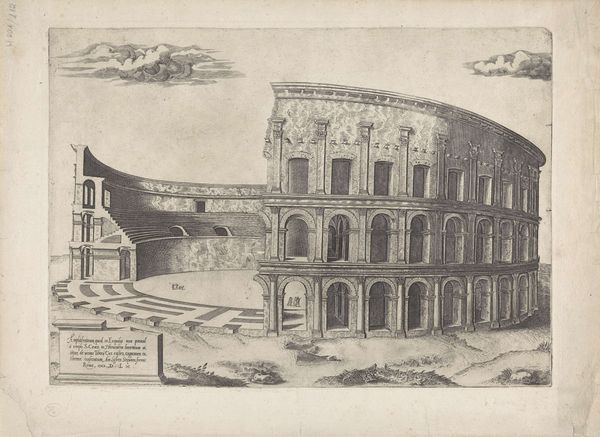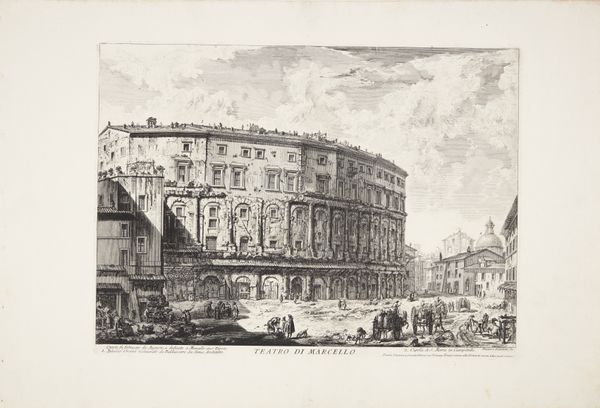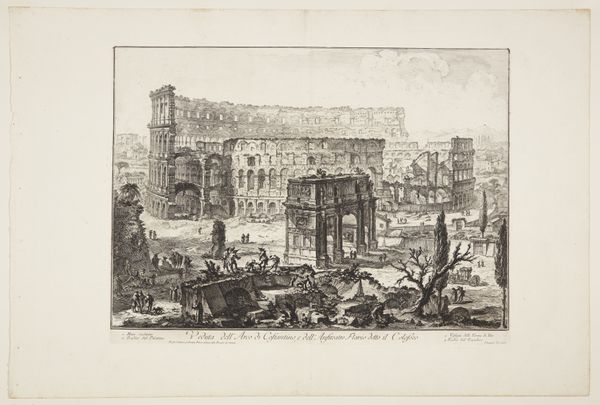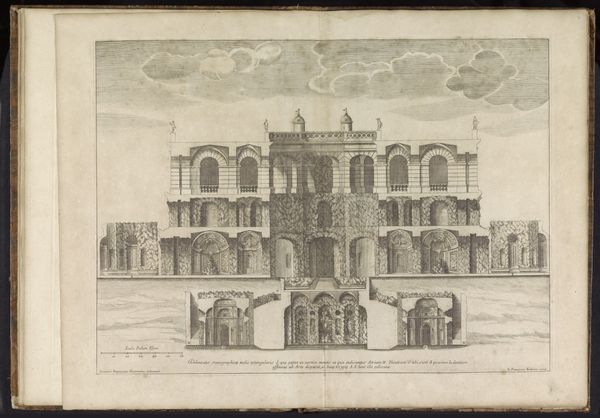
drawing, print, ink, engraving, architecture
#
pen and ink
#
drawing
# print
#
11_renaissance
#
ink
#
cityscape
#
engraving
#
architecture
Dimensions: height 215 mm, width 381 mm
Copyright: Rijks Museum: Open Domain
Curator: Let's turn our attention to "Theater van Marcellus te Rome," a detailed print created around 1575 by Étienne Dupérac, currently housed in the Rijksmuseum. Editor: Immediately, I’m struck by the scene’s quiet austerity, and the incredible detail captured in what seems like a crumbling urban landscape. There's a weight of history here, both literally in the massive architecture, but also conveyed by the aged material rendering of pen and ink. Curator: Dupérac uses the precision of pen and ink to highlight architectural forms, making visible the theater's original design alongside signs of degradation. He calls up ideas of grandeur and transience, all in the depiction of a single space. It really stands out as a cultural statement about lost glory. Editor: Absolutely. The ruin as a powerful metaphor, of course. But look closely, it also reveals social stratification. Commoners are depicted bustling about daily life at the base of these monumental buildings, almost like insects compared to the grandiose architectural remnants of an ancient empire. The class dimensions cannot be overlooked; Rome has always layered its meanings on top of its societal stratifications. Curator: That resonates deeply. The architectural ruins become an implicit commentary on how social structures are also in decline, a crumbling edifice of former imperial power. And Dupérac highlights the weight of history. Each marking feels significant, not just as structural detailing, but as part of a broader psychological landscape—a reflection on the Roman Empire, its people, and society. Editor: And it speaks to cyclical power shifts—what was once an empire is now a theatre for everyday life, layered by people and new cultural values, even amidst decay. Think about the performance aspect implicit in theatre too, in contrast to real or remembered social practices, or shifting imperial ideals. It all speaks to resilience and resistance within the social fabric. Curator: I find the visual weight really carries this symbolic message, the sheer massing of this theatre against the people, really grounds our viewing in that perspective, in the face of larger cultural narratives, but really gives our mind’s eye pause, for the role of people inside grand history and the images or structures we leave behind. Editor: A potent intersection of urban, architectural, and human histories laid bare! It really speaks to the complexities and visual narratives we impose on landscapes over time.
Comments
No comments
Be the first to comment and join the conversation on the ultimate creative platform.
